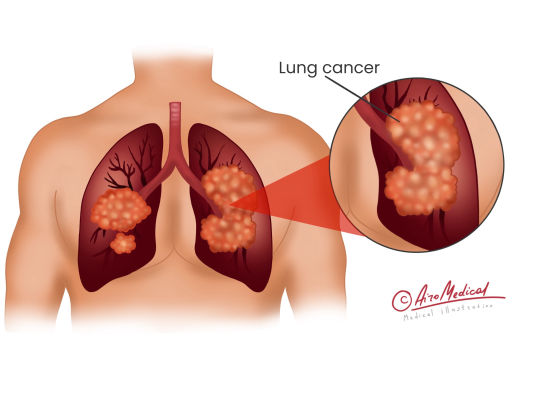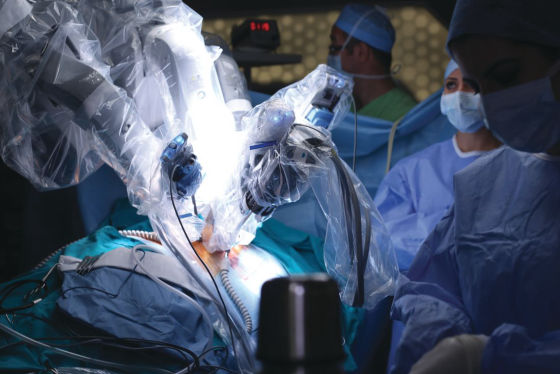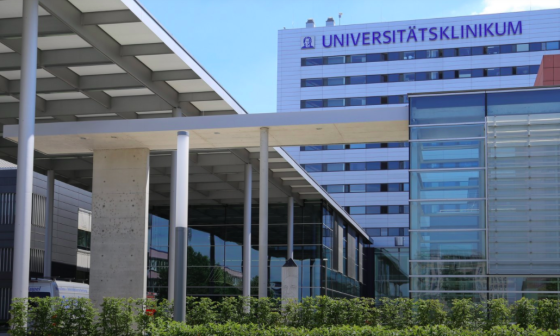Lung cancer treatment in Germany
Lung cancer overview
Lung cancer is the second most frequent type of cancer worldwide and is the most common reason for death. This disease accounted for 2.1 million new cases and 1.8 million deaths in 2021. The lack of evident symptoms in the early stages means that the illness is often detected too late. Early detection strategies are essential in the treatment of lung tumours. This type of cancer defies medicine, doctors, and the world's health policy.
Lung cancer symptoms and statistics
What makes lung cancer so deadly is that the symptoms are non-specific: cough, shortness of breath, hoarseness, and chest pain—late diagnosis results in more than half of people with lung cancer dying within one year of diagnosis.

The high mortality rate shows that even with all the therapeutic advances, detecting the disease as early as possible is essential. Espesially for small cell lung cancer, doctors can remove tumours surgically at an early stage, which is a high chance of curing cancer. However, in many cases, a malignant cellular change is detected at an early stage only by chance, for example, during check-up.
Smoking is the leading cause of small cell and non-small cell lung cancer, accounting for 80-90 % of cases. Men who smoke are 23 times more likely to develop lung cancer. Women are 13 times more likely than never smokers. Exposure to carcinogens, so-called air pollution, is the second cause of the disease.
Why do patients choose Germany for lung cancer?
The five-year survival rate for lung cancer is 18.6%. At the same time, the survival estimate in Germany from 2017 to 2020 was 20.3%. Compared to other European countries, the survival rate is very high. This indicator perfectly characterizes the success of the German medical system in the fight against this disease.
How is lung cancer diagnosed in German clinics?
Often, patients turn to the clinic only when the tumour exceeds a critical size, or cancer cells are already attacking the lymph nodes and metastasizing. Therefore, establishing a unified screening is the main goal in treating lung cancer in Germany. Currently, the best screening method is low-dose computed tomography (CT).
 Technically, CT is well-suited for screening. Compared to x-ray imaging, computed tomography can accurately visualize small tumours. In addition, since CT images are created in layers, doctors can also use the images to estimate the size of the tumour, and its location, which is very important for planning surgery.
Technically, CT is well-suited for screening. Compared to x-ray imaging, computed tomography can accurately visualize small tumours. In addition, since CT images are created in layers, doctors can also use the images to estimate the size of the tumour, and its location, which is very important for planning surgery.
This detailed imaging study can detect pulmonary nodules. Their presence does not necessarily indicate cancer but can be caused, for example, by tuberculosis or an abscess.
When deciding further on the treatment strategy, namely whether it should be surgically removed or treated in other ways, size is not the main factor for this. Instead, a tissue sample (a biopsy), is vital in determining treatment. The biopsy is taken using bronchoscopy, in which pulmonologists look directly into the airways. The radiologists then obtain a sample using a needle passed through a bronchoscope.
Modern equipment helps to detect nodules using bronchoscopy, which makes the research method even safer and more accurate. For example, a biopsy can be scheduled using bronchoscopy with high-resolution CT images. In addition, the use of robotic navigation systems helps to introduce a flexible bronchoscope equipped with a camera and sensors through narrow airways. An additional microwave probe is inserted into the bronchoscope's working channel, and already during the procedure, the tumour can be destroyed by a heat wave.
Advanced clinics in Germany operate with a mobile 3D x-ray device that creates cross-sectional images such as CT, the so-called cone beam CT. This compact X-ray machine moves to the patient's table during bronchoscopy so that investigators can immediately see whether they have reached the target area with real-time images.
Nowadays, German scientists are conducting research using exhaled air or blood samples. But they have not yet received satisfactory results, so research is still ongoing.
Types and stages of lung cancer
Depending on the location, type and stage of the tumour and the presence of metastases, a treatment plan is drawn by German oncologists.
Lung cancer types
Doctors must determine what cells compromise the tumour in the lung. There are two main types of lung cancer:
- small cell lung cancer (SCLC) - is usually associated with the bad habit of smoking, and its primary treatment is chemotherapy;
- non-small cell lung cancer (NSCLC) contains 80% of all lung cancer diseases. The main methods of treatment are chemotherapy, radiation and surgery;
- carcinoid is the least common and is more commonly treated with surgery.
 Once the type of cancer has been determined, the next step in the diagnosis process is staging. The results of analyzes and tissue samples are taken to determine the stage. Staging is used to discuss the prospects for recovery or the prognosis of lung cancer. The stage of the cancer is determined by a combination of factors such as:
Once the type of cancer has been determined, the next step in the diagnosis process is staging. The results of analyzes and tissue samples are taken to determine the stage. Staging is used to discuss the prospects for recovery or the prognosis of lung cancer. The stage of the cancer is determined by a combination of factors such as:
- the size and location of the tumour;
- damage to regional lymph nodes;
- metastasis (spread of cancer to other organs).
Lung cancer stages
The stages range from one to four, usually indicated by Roman numerals (0 to IV). The lower the stage of lung cancer, the less cancer has spread and the better the prognosis.
- Stage 0 - early-stage lung cancer is localized only in the upper lining of the lung or bronchi and has not spread.
- Stage I - Cancer has not spread to the lymph nodes or other body parts.
- Stage II - the beginning of spread to nearby lymph nodes. Cancer has not spread to distant organs.
- Stage III - most often, cancer has spread to the mediastinum lymph nodes (the chest area between the lungs).
- Stage IV is the most common form of lung cancer. It is because cancer has already metastasized or spread to the lining of the lungs or other areas of the body.
Lung cancer 5-year survival rate | ||
|---|---|---|
| cancer stage | small cell lung cancer | non-small cell lung cancer |
| localized disease | 27% | 63% |
| regional metastases | 16% | 35% |
| distant metastases | 3% | 7% |
Just as every person is unique, every type of lung cancer is different. The statistics above show a huge difference in treatment results depending on the diagnostic results. Therefore, it is essential to know the type and stage of lung cancer, sometimes referred to as the "lung cancer profile," as it helps determine possible and available treatment options. But remember that no one knows precisely how the disease will respond to treatment and can't predict life expectancy.
How is lung cancer treated in Germany?
 Decisions about lung cancer treatment are made jointly by the treatment team and the patient. All treatment options have potential risks and benefits. The final lung cancer treatment approach depends on what type of cancer, the disease's stage, and the treatment goal.
Decisions about lung cancer treatment are made jointly by the treatment team and the patient. All treatment options have potential risks and benefits. The final lung cancer treatment approach depends on what type of cancer, the disease's stage, and the treatment goal.
- Chemotherapy for lung cancer is used at different stages of treatment to achieve different goals, such as shrinking or stabilizing the tumour, killing remaining cancer cells after surgery, or relieving the symptoms of lung cancer. The procedure is usually performed intravenously in several stages.
- Radiation therapy for lung cancer uses powerful, high-energy x-rays to kill cancer cells or prevent them from growing. The radiation may come from an external source or radioactive materials placed directly inside the lung cancer—the most commonly used external irradiation. The radiation is directed at lung cancer and only kills cancer cells in that area of the lung.
- Surgery for lung cancer involves removing the tumour, some surrounding lung tissue, and often the lymph nodes in the tumour area. It is considered to be the best option when the cancer is localized and unlikely to spread.
Lung cancer treatments that kill cancer cells can also affect normal cells, causing unwanted side effects. In Germany, fundamentally new methods and drugs for lung cancer are used, which minimally affect healthy cells.
- Targeted therapy is to identify mutations in cancer cells. Targeted therapy drugs focus on cancer cells, interrupting their growth and functional development. These lung cancer treatments often cause fewer side effects because they only target the cancer cell, bypassing normal, healthy cells.
- Immunotherapy, also called immuno-oncology, is a type of medicine that treats cancer using the body's immune system. The immune system protects against harmful foreign agents such as bacteria and viruses. Particular drugs stimulate the immune system to detect and destroy cancer cells.
- Proton therapy (proton beam therapy) is a type of radiation therapy. Proton beams are used to destroy and shrink the tumour.
- Transpulmonary chemoembolization is a method in which anticancer drugs are injected directly into the tumour through its feeding vessels. It provides a more extended period of contact in the tumour with a higher concentration of the cytostatic drug. This method is safer and shows promising results.
- Ablative therapy uses high-energy radio waves to heat the tumour. First, a thin needle probe is inserted through the skin and advanced until its tip is in the tumour. Probe placement is controlled by computed tomography. Immediately after the tip is in place, an electric current is passed through the probe, which heats the tumour and destroys the cancer cells.
Currently, clinical trials have been carried out in Germany, and promising results have been obtained in treating lung cancer with alternative methods.
- Dendritic Cell Cancer Vaccine. The goal of the vaccine is to force the patient's immune system to kill the cancer cells and induce immunological memory against subsequent disease recurrence. Vaccines expose the patient's immune system to a unique set of appropriate antigenic targets, resulting in a highly tumour-focused immune response.
- Hyperthermia is an adjunct therapy for lung cancer due to its ability to enhance the effectiveness of chemotherapy and/or radiation. It may improve therapeutic outcomes, especially in cases of inoperable lung cancer. Hyperthermia is heating the whole body, particularly the patient's tissues affected by cancer. To do this, the body is exposed to external radio frequency radiation, which causes the tissues to heat up from the inside. Due to its chemically acidic properties, cancerous tissue heats up more than healthy tissue. As a result, it reaches temperatures of 42°C to 44°C, which weakens and damages cancer cells. In contrast, healthy tissue only reaches about 38°C, a safe temperature for the body.
Because lung cancer is usually diagnosed at a late stage and tends to metastasize quickly, making surgery impossible, affected patients may benefit from complex treatments or complementary therapies.
TOP rated hospitals for lung cancer treatment in Germany
Lung cancer is a severe disease. Its detection at a late stage leads to 80% of patients dying within a year. Therefore, treatment for lung cancer should begin immediately. AiroMedical chooses clinics in Germany that provide treatment with multidisciplinary teams with innovative approaches and methods.
Helios Hospital Berlin-Buch
 It is the largest hospital in Germany, firmly occupying the top ranks in all rankings of oncology clinics. Find out more about Helios Berlin-Buch Clinic
It is the largest hospital in Germany, firmly occupying the top ranks in all rankings of oncology clinics. Find out more about Helios Berlin-Buch Clinic
- 94% positive feedback from patients undergoing diagnostics and treatment at the clinic;
- specializes in the cure of various types of cancer;
- the percentage of recovered patients in the clinic steadily increases the rating of the whole country;
- oncohematologists of the clinic are recognized as leading doctors in Germany;
- the medical institution is equipped with modern and latest diagnostic and treatment equipment;
- advanced biotechnical methods of treatment are actively practised in the clinic.
Immuno-Oncological Center IOZK Cologne
 The centre specializes in individual cancer therapy with specific immune system activation. Why do patients refer to the Immuno-Oncological Centre for targeted cancer vaccines?
The centre specializes in individual cancer therapy with specific immune system activation. Why do patients refer to the Immuno-Oncological Centre for targeted cancer vaccines?
- a team of leading physicians and experienced scientists work together in an interdisciplinary manner;
- the results of fundamental immunological research are directly applied to the treatment of cancer patients;
- specialists in personalized cancer therapy, in particular, the preparation of an individual vaccine;
- the use of a cancer vaccine is often combined with other innovative treatments;
- the clinic is a pioneer in the field of personalized medicine.
University Hospital Frankfurt am Main of Goethe-University
 The clinic's units cover the entire spectrum of medical services. Why the hospital is a leading oncology centre worldwide?
The clinic's units cover the entire spectrum of medical services. Why the hospital is a leading oncology centre worldwide?
- all clinics and offices are equipped following modern requirements and quality standards adopted in Germany;
- clinic - the most significant medical, scientific and educational base;
- the equipment of the clinic is high-quality diagnostic and medical equipment. The following are used here: DaVinci gamma scalpel, ultra-fast computed tomography devices, and modern PET scanners;
- high quality of service has brought fame to the clinic all over the world;
- stay in the clinic will satisfy the need for the comfort of any patient: multifunctional beds, personal bathrooms, and technical equipment.
University Hospital rechts der Isar Munich
 The hospital compromises a highly qualified team of dedicated doctors, nurses and scientists who accepts patients not only from Munich but from all over the world. Read more about the University Hospital rechts der Isar
The hospital compromises a highly qualified team of dedicated doctors, nurses and scientists who accepts patients not only from Munich but from all over the world. Read more about the University Hospital rechts der Isar
- ideal conditions for providing the best possible standards of university medical care;
- more than 48,000 patients receive inpatient care each year, in addition to approximately 201,000 outpatients;
- a world-renowned centre for all diagnostic and therapeutic procedures in nuclear medicine, serving all indications in oncology.
Germany plays an essential role in the world of innovative medicine. German clinics offer treatment per the latest medical standards while being the leading institutions for training doctors and medical staff.
References:
- AiroMedical: Lung cancer guide
- American Lung Association: Complementary and Alternative Therapies for Lung Cancer
- Celsius42: Hyperthermia in lung cancer treatment: Reinforcing the efficacy of chemotherapy and radiation
- Frontiers: Dendritic Cell-Based Immunotherapy in Lung Cancer
- American Cancer Society: Radiofrequency Ablation (RFA) for Non-Small Cell Lung Cancer
- Georg Thieme Verlag KG: Regional Chemotherapy of the Lung: Transpulmonary Chemoembolization in Malignant Lung Tumors